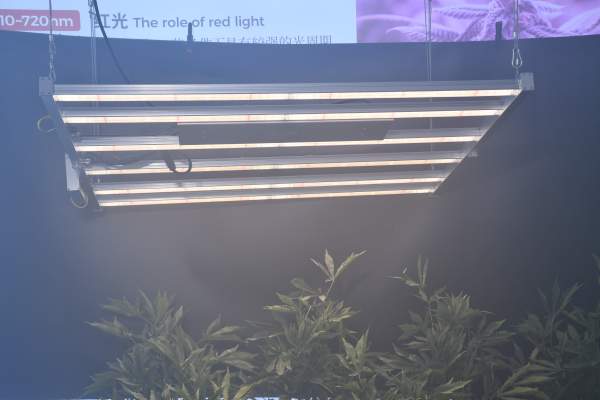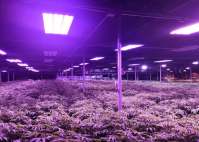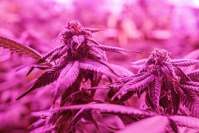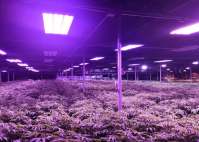The global plant lamp market is divided into four categories, mainly LED grow lights, fluorescent lamps, high pressure sodium (HPS) lamps, incandescent lamps and halogen lamps. Let us take a look.

By 2020, the global LED grow light market will reach 1.9 billion US dollars, with a compound annual growth rate of more than 25%. The LED grow light market is relatively new, and the technology has been developing, and more efficient products have been continuously introduced. The lifespan of LED grow lights is 10 times longer than that of ordinary energy-saving lamps, without frequent replacement, and it also saves electricity costs. Compared with other lights, LED grow lights generate less heat, and the LED light source is a cold light source. As long as the ventilation is maintained, auxiliary heat dissipation equipment is not required.
2. Fluorescent light
By 2020, the global fluorescent lamp market is expected to reach 1 billion U.S. dollars, mainly used in gardener lighting. It is also used for seed germination. Nowadays, high-yield and high-efficiency fluorescent lamps have been developed. The newly-developed fluorescent lighting is more efficient and low in temperature, easy to install, and only needs to replace the bulb, which is more efficient and cost-effective.
3. High pressure sodium lamp
By 2020, the global market value of high pressure sodium lamps is expected to reach 157 million U.S. dollars. The light emitted by the high-pressure sodium lamp can make plants produce, fruit and ripen. The advantage of the high-pressure sodium lamp is that the lighting range is wide, but it should not be too close to the plant, because the heat generated is more likely to burn the plant, and the high-pressure sodium lamp will become weak after using it for a long time. The lifespan of 18,000 hours is too short compared to the LED grow light, it needs frequent replacement, and the cost is relatively high.
4. Incandescent lamps and halogen lamps
The global incandescent lamp and halogen lamp market value will reach 79.5 million U.S. dollars by 2020, with a compound annual decline rate of 1.5%.
Incandescent lamps generally make us see more, because they are also used at home, but one of the disadvantages of using incandescent lamps as plant lamps is that it does not save energy. The part of the energy that does not produce light will generate extra heat. Incandescent lamps are not used as plant lamps. Too suitable, so is the halogen lamp, because its performance is similar to that of an incandescent lamp.
Advantages of LED grow lights:
1. Different wavelengths of light have different effects on plant photosynthesis. The light required for plant photosynthesis has a wavelength of about 400-700nm. 400-500nm (blue) light and 610-720nm (red) contribute the most to photosynthesis, and LED grow lights have this.
2. Blue light can promote the growth of plant leaves, the synthesis of plant substances and the formation of plant fruits; red light can promote the growth of plant rhizomes, help flowering and fruiting, and increase yield!
3. The ratio of red and blue LEDs of LED grow lights is generally between 4:1-9:1, usually 6-9:1.
4. When plant lights are used to fill plants with light, the height from the leaves is generally about 0.5-1 meters, and continuous exposure for 12-16 hours a day can completely replace the sun.
5. The effect is very significant, because it is not affected by other factors of the natural climate and regional lights, so that the plants will always grow better.
6. Solve the problem of lack of sunlight in the greenhouse in winter, promote the various elements needed in plant photosynthesis, make the fruits and vegetables harvested 20% earlier, and increase the yield by 3 to 50%.
7. LED light source is also called semiconductor light source, which can emit light of specified wavelength, so it can control the color of light. When it is used to illuminate plants, the growth of plants can be improved by dimming.
8. The power of LED grow lights is low, but the efficiency is extremely high, because the light emitted is full spectrum, that is to say, there are 7 colors, which are needed by plants. Traditional plant lights do not have most of the light, only plant lights meet.
In summary, the market price of LED grow lights is higher than that of the other three plant lights, but it has more advantages than the other three plant lights in terms of performance, lifespan, and effect, and is more worthy of consumers to buy. The various LED grow lights produced by Shenzhen Yaorong are well received by users. On the road of future development, Yaorong Technology will always insist on producing good products to help more plants grow more efficient and reliable.






